

 |

|
P |
|
|
|
|||||||||||||||||||||
|
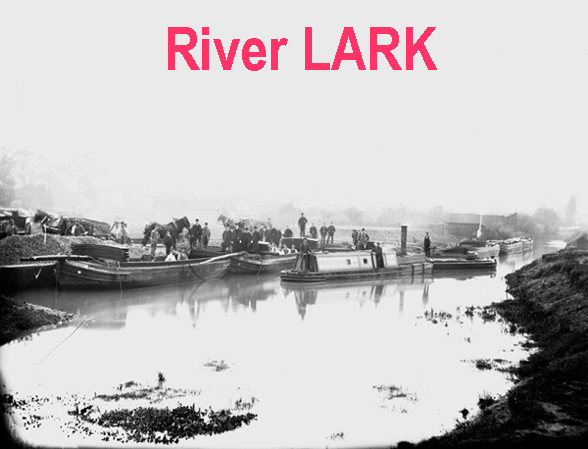
THE RIVER LARK.An outline history by Alan H. Faulkner.There have been several major changes to the lower reaches of the Lark. Originally the river took a more westerly course downstream from Isleham and joined the Ouse much nearer Ely. Later a nearly straight artificial cut was built from Isleham to Prickwillow which, at that time, stood on the Ouse. In 1830 the Ouse was diverted between Ely and Littleport into Sandy's Cut and its former course between Ely and Prickwillow became extinct. Below Prickwillow only part of the course was still used by the Lark as a new outlet was built to link up with Sandy's Cut. In many respects the Lark is very similar to its parent river. Boats have been able to use both to some extent for centuries and both were made fully navigable in the late l600s or early 1700s. Then for nearly 200 years the rivers were in the same ownership. Like the Great Ouse a major rebuilding programme was carried out on the Lark in the l830s and 1840s resulting in a mixture of locks and staunches. Like the Great Ouse these works fell into disrepair in the face of railway competition. Like the Great Ouse they were fully and expensively repaired in the early l890s; like the Great Ouse this restoration was short lived. And whilst the Great Ouse has almost been restored, once again, through to Bedford - interest in a scheme to restore part of the Lark is now increasing. The lowest reaches of the Lark have been used for navigation
since the earliest recorded times. Then the Great Ouse was tidal, at
least to Ely, as was the Lark to Isleham. Small seagoing ships used to
trade quite far inland but later, with the building of Denver Sluice in
1651, the trade was handled by fenland lighters. Cullum spent a considerable sum of money on virtually
rebuilding the entire navigation. Even now many of the locks, staunches
and buildings still bear stones engraved with his initials and the
date. Indeed most of the main features of the river today seem to have
derived from the Cullum era. The standard Lark pound lock was 88 feet in length, 11 ½ feet
wide and comprised a rectangular brick chamber with mitre gates at each
end. However the lock chamber at Lackford is virtually unique in this
country in that it is crescent-shaped; it seems likely it was
originally two staunches. During this time coal remained the staple traffic on the river. The second most important traffic was in grain - for instance quite large tonnages of barley were taken to maltings at Bury. Considerable tonnages of stone were carried - over the centuries much of the stone used in Bury's older buildings had been transported in this way from places such as Barnack near Peterborough. Wine was also brought up to Bury from King's Lynn. A feature of the Lark trade was that upstream cargoes far outweighed downstream traffic. There were barge building yards at Mildenhall and Isleham. The fact that the navigation bad never reached its intended point in Bury was always a vexed point and several attempts were made to remedy matters. In 1855 the Bury St. Edmunds Navigation Company was formed by local businessmen to take over the river and to extend the navigation to Eastgate Bridge. In fact the attempt failed but another, soon after, succeeded in extending up to the railway. This necessitated a new lock at Tollgate Bridge. The railway had reached Bury in 1846 when line from Ipswich was opened. Despite the extension of the navigation into the town the railway soon had an adverse effect. Traffic above Mildenhall was hard hit and eventually ceased altogether with the result that the locks and staunches quickly became impassable. Below Mildenhall some traffic survived with much farm produce being sent out for transshipment to the railway at such places as Ely and Littleport. In 1889 there was a major development when the Eastern
Counties Navigation & Transport Company Limited was formed with its
headquarters at St. Ann's Port, King's Lynn and an office at
Mildenhall. Lord Bristol of Ickworth was its chairman; he was also the
Member of Parliament for Bury. Above Mildenhall the works mainly comprised rebuilding and regating the locks and staunches. Several of the latter had their gates removed and slots were installed in the brickwork down which planks could be dropped to. form a temporary dam. One significant new work, however, was to make the small stream to Tuddenham Mill navigable. To achieve, this a new staunch was built about half way up the 1 ¼ mile branch, whilst the stream was generally straightened and deepened. Not only did the company repair the locks but it actively set
about finding trade for the river - something Cullum had never done -
and an extensive fleet was built up from the early l890s. Basically the
fleet comprised several gangs of fenland lighters, which were towed by
steam tugs. It is believed the tugs were built at Thetford by Burrells.
In all the company spent about £40,000 on the works which were completed in September 1894. Unfortunately the capital resources were inadequate and a Receiver and Manager was appointed in December on behalf of the debenture holders. He continued to manage the river and operate the tugs and barges for several years until the fleet was disbanded and sold by auction at Mildenhall. But the river above Icklingham rapidly fell into disuse. In 1898 income totalled £3,194 including £3,054 from freight as carriers. Expenses amounted to £3,469 making an overall loss of £275. The main traffics were granite, phosphates, pyrites, slag, wood and coal, but small quantities of oil, grain, earthenware, glass and sugar were also carried. Thereafter traffic declined still more and ceased altogether
above Mildenhall by about the end of the First World War although
isolated stretches, such as at Icklingham, continued to be used for
pleasure boating. The river remained in the bands of the Receiver for
several years but eventually it passed to a milling company - Parker
Bros. (Mildenhall) Limited. One of the last traders on the Lark was E.W. Diver of Isleham.
For a while he operated the steam tug BURY - he also ran gangs of
fenland lighters that were horse-drawn. He ceased trading in the l920s.
The last traffic included sugar beet taken to the factory at Ely. This
finished in 1959. Previously beet was also taken to the Wissington
factory. Today increasing numbers of pleasure craft use the 10 miles of river up to Judes Ferry which is the effective head of navigation. The staunch below this point is no longer in existence and there is usually insufficient depth to go any further. But the possibility of re-opening over 2 miles of river up to Mildenhall is now being actively considered. Above Mildenhall the problems would be far greater - the river has been culverted at Barton Mills where the London to Norwich trunk road crosses, whilst there are doubts if there is sufficient water in the river today to provide for navigation. Water shortages bedevilled the navigation throughout the 19th century -only time will tell.
This table has been compiled from a wide variety of sources and the author would appreciate anyone contacting him who can add to, or correct, this list in any way. Wherever possible alternative names for locks and staunches have been given since these often changed significantly over the years. There may well have been another staunch actually in Bury between Tollgate Lock and the terminal basin by the railway. In preparing this short account I have drawn on material contained in Flashlocks on English Waterways, a comprehensive study undertaken by M.J.T. Lewis, W.N. Slatcher and P.N. Jarvis and first published in 1968. Information has also come from the Royal Commission Report on Canals & Inland Waterways (1907 and from Bradshaw's canals & Navigable Rivers 1904 and 1928). Then, apart from my own fieldwork, I am grateful to David Weston and George Stebbings who have both done much work researching into the history of the river. A.H.Faulkner 6.2.1977 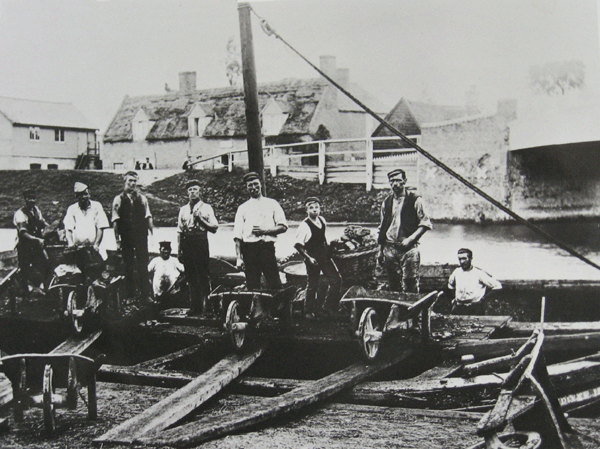 |
||||||||||||||||||||||||||||||||||||||||||||||||||||||||||||||||||||||||||||||||||||||||||||||||||||||||||||||||||||||||||||||||||||||||||||||||||||||||||||||||||||||||||||||||||||||||||||||||||||||||||||||||||||||||
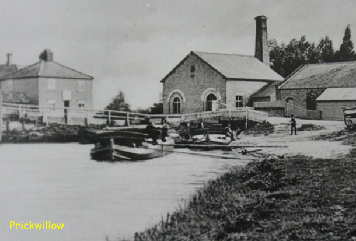
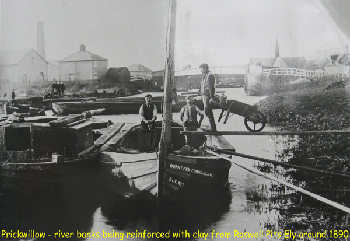
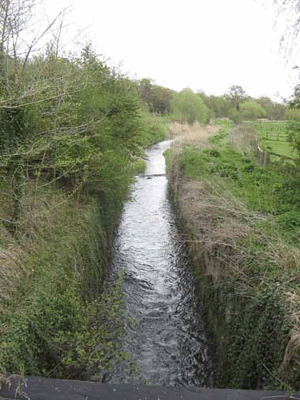
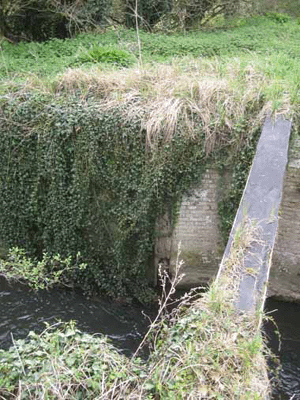 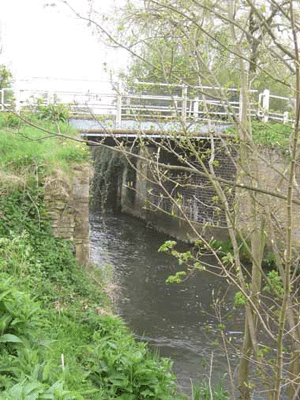 Flempton Lock (Lock No. 8), River Lark. The road is the Road from Flempton to West Stow. © Copyright Ivan Cane, East Anglian Waterways Association. |
MORE INFORMATION: The River Lark and its NavigationA recommended external link to the excellent St Edmundsbury
Chronicle 2000 pages: The Lark and its Navigation
|